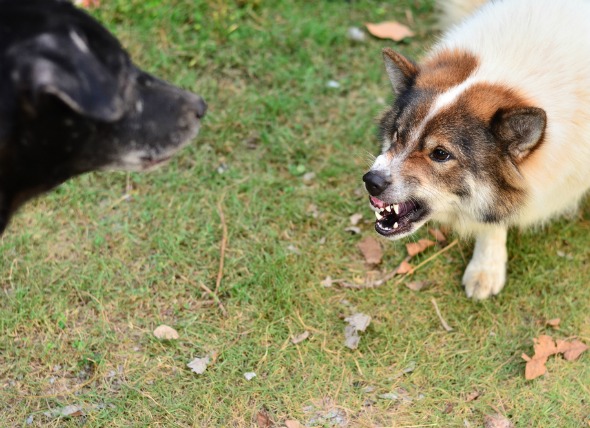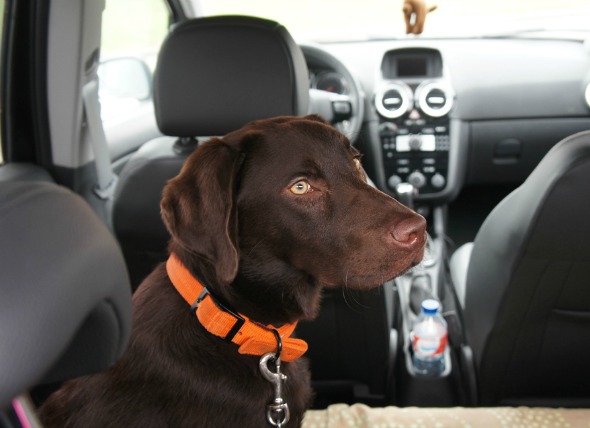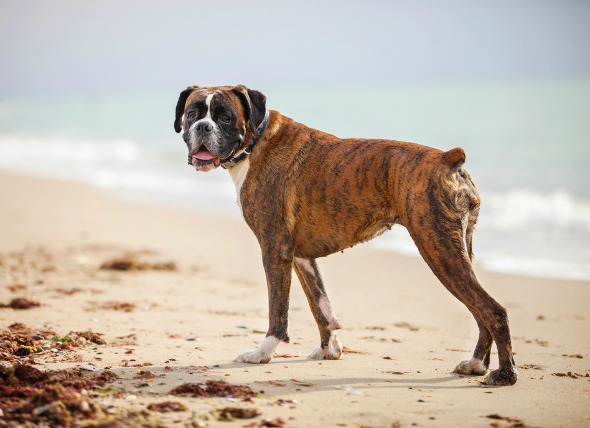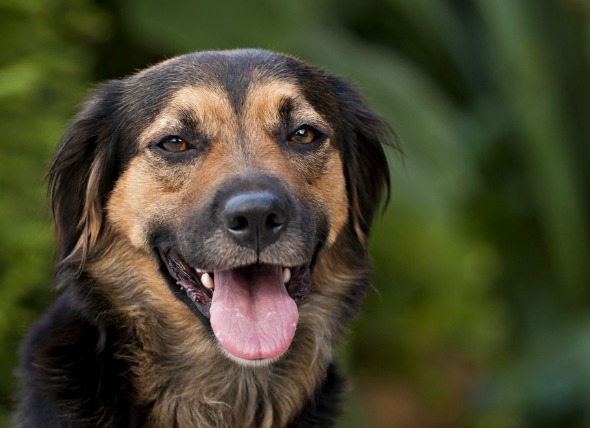

Inter-dog aggression occurs when a dog is overly aggressive towards dogs in the same household or unfamiliar dogs. This behavior is often considered normal, but some dogs can become excessively aggressive due to learning and genetic factors.
Inter-dog aggression occurs much more frequently in non-neutered male dogs. Common signs usually start appearing when the dog reaches puberty (between six and nine months old) or becomes socially mature at 18 to 36 months. Generally, inter-dog aggression is more of a problem between dogs of the same gender.
The most common symptoms of inter-dog aggression include growling, biting, lip lifting, snapping, and lunging towards another dog. These behaviors may be accompanied by fearful or submissive body postures and expressions such as crouching, tucking the tail under, licking the lips, and backing away. Typically, before a severe inter-dog aggression incident in the same household occurs, more discreet signs of social control will become noticeable. One tactic a dog may use is staring and blocking the other dog’s entrance into a room. A specific condition sometimes triggers the aggression, even though the dogs normally get along well.
The causes of this condition vary. A dog may have become overly aggressive because of its past experiences. For example, it may not have socialized with other dogs as a puppy, or it may have had a traumatic encounter with another dog. An owner's behavior may also influence a manifestation of the condition (e.g., if an owner shows compassion for a weaker dog by punishing the more dominant dog). Other reasons for aggression are fear, wanting to protect territory and social status, or a painful medical condition.
Selective breeding and genetics are also a factor. Dogs bred for fighting, such as pit bull terriers, tend to exhibit inter-dog aggression more frequently.
There is no official procedure to diagnose inter-dog aggression. Some symptoms are very similar to canine “play” behavior and excited, non-aggressive arousal. Biochemistry, urine analysis, and other laboratory tests usually yield unremarkable results. But if any abnormalities are identified, they may help the veterinarian find an underlying cause for the aggression.
If a neurological condition is suspected, an MRI scan may be necessary to determine whether it is a central nervous system (CNS) disease, or to rule out other underlying neurological conditions.
There is no real cure for inter-dog aggression. Instead, treatment is heavily focused on controlling the problem. Owners must learn how to avoid situations that encourage aggressive behavior in the dog, and to break up fights quickly and safely when they occur. In situations where aggressive behavior is more likely to occur (e.g., walks in the park), the dog must be kept away from potential victims and be under constant control. The owner may also want to train the dog to feel comfortable wearing a protective head halter and basket muzzle.
Behavioral modification also plays a crucial role in the treatment. For example, dogs should be trained to sit and relax on verbal cues, with small food treats as rewards. The owner may also want to condition the dog not to fear other dogs, by gradually exposing it to other dogs in public. Unfortunately, the only way to assuredly prevent your dog from injuring others -- especially if your dog has already been involved in an incident or incidents -- is to put the dog down (euthanize), cruel as it seems.
There is no licensed medication used to treat inter-dog aggression. If it is largely caused by fear or anxiety, as opposed to a desire to establish dominance, then low dosages of certain Serotonin Reuptake Inhibitors, Tricyclic Antidepressants, or Benzodiazepines may be prescribed.
Successful treatment of inter-dog aggression is usually measured by the decrease in severity or frequency of incidents. In addition, the treatment recommendations need to be implemented over the entire life of the dog. Even if aggressive incidents are completely eliminated for a period of time, relapses may occur if the owner does not strictly adhere to the recommendations at all times.
There are currently no known preventative measures.
 Dogs and Motion Sickness
Gastrointestinal Distress Related to Motion in Dogs
&nbs
Dogs and Motion Sickness
Gastrointestinal Distress Related to Motion in Dogs
&nbs
 Retained Baby Teeth in Dogs
Retained Deciduous Teeth in Dogs
A retained or pe
Retained Baby Teeth in Dogs
Retained Deciduous Teeth in Dogs
A retained or pe
 Cardiomyopathy in Boxer Dogs
Ventricular Arrhythmia in Boxer Dogs
Cardiomyopat
Cardiomyopathy in Boxer Dogs
Ventricular Arrhythmia in Boxer Dogs
Cardiomyopat
 Shock Due to Bacterial Infection in Dogs
Septic Shock in Dogs
Shock associated with genera
Shock Due to Bacterial Infection in Dogs
Septic Shock in Dogs
Shock associated with genera
 Mouth Cancer in Dogs
Undifferentiated Oral Cavity Tumors in Dogs
Undif
Mouth Cancer in Dogs
Undifferentiated Oral Cavity Tumors in Dogs
Undif
Copyright © 2005-2016 Pet Information All Rights Reserved
Contact us: www162date@outlook.com